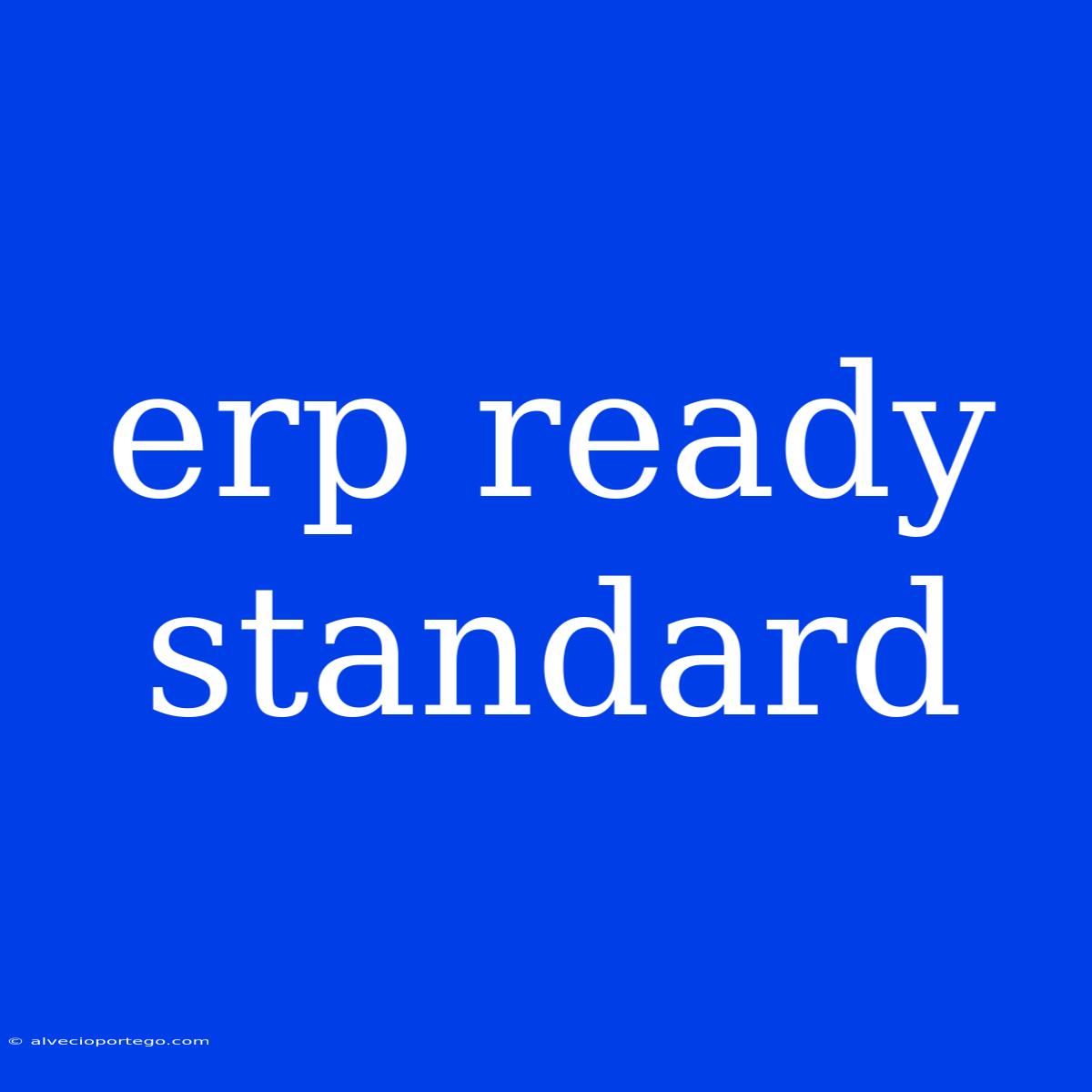ERP-Ready Standards: A Guide to Seamless Integration
Introduction
In today's dynamic business environment, companies are constantly seeking ways to streamline operations and improve efficiency. Enterprise Resource Planning (ERP) systems play a crucial role in this endeavor by integrating various business functions, such as finance, human resources, and supply chain management, onto a single platform. However, the success of an ERP implementation hinges on the readiness of existing systems and processes. This is where ERP-ready standards come into play.
What are ERP-Ready Standards?
ERP-ready standards are a set of guidelines and best practices that ensure seamless integration with an ERP system. These standards aim to establish a foundation for data consistency, process standardization, and system compatibility, facilitating a smooth transition to an ERP environment.
Key Aspects of ERP-Ready Standards:
1. Data Standardization:
- Data Structure: Consistent data structures across all business systems are essential for accurate reporting and analysis. Implementing standardized data models and ensuring data integrity are crucial.
- Data Quality: Data accuracy and completeness are critical for ERP performance. Establishing data validation rules and implementing data cleansing procedures is vital.
2. Process Standardization:
- Workflow Optimization: Streamlining workflows and eliminating redundancies are essential for efficient business operations. Standardized workflows ensure consistency and facilitate process automation.
- Business Rules: Defining and implementing clear business rules across departments ensures consistency in decision-making and data interpretation.
3. System Compatibility:
- Integration Points: Identifying and documenting integration points between existing systems and the ERP system is crucial for seamless data exchange.
- API Connectivity: Utilizing Application Programming Interfaces (APIs) facilitates communication between different software systems, enabling smooth data transfer and process automation.
Benefits of Adopting ERP-Ready Standards:
- Reduced Implementation Costs: Standardized systems and processes minimize the effort required for customization and integration, leading to lower implementation costs.
- Improved Data Accuracy and Consistency: Standardized data structures and processes ensure data integrity, leading to more reliable and accurate insights.
- Enhanced Efficiency and Productivity: Streamlined workflows and automated processes improve operational efficiency and free up employees to focus on strategic initiatives.
- Increased Scalability and Flexibility: Adopting ERP-ready standards makes it easier to adapt to changing business requirements and scale operations.
Conclusion:
ERP-ready standards are an essential foundation for successful ERP implementation. By adopting these standards, businesses can streamline operations, enhance data integrity, and maximize the return on their ERP investment. The benefits extend far beyond the implementation phase, creating a more efficient and scalable business environment for the long term.

